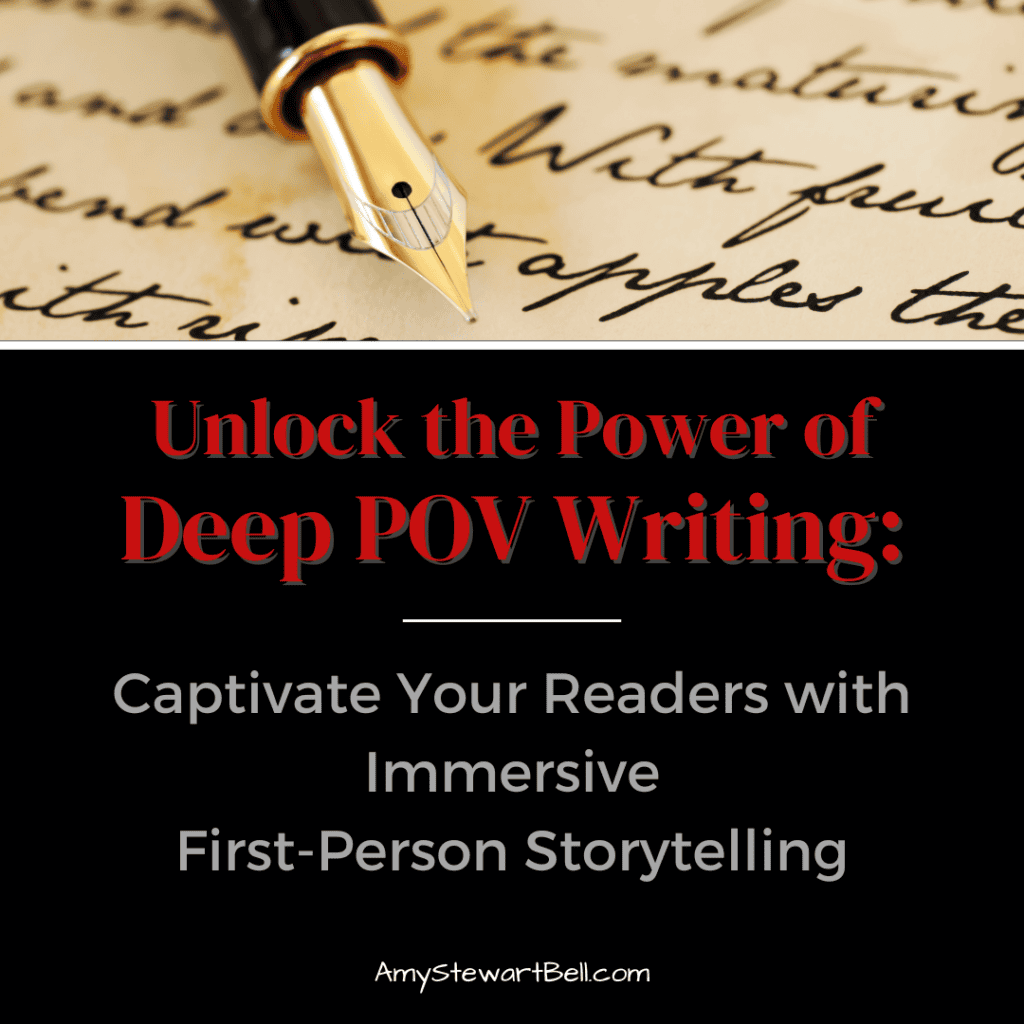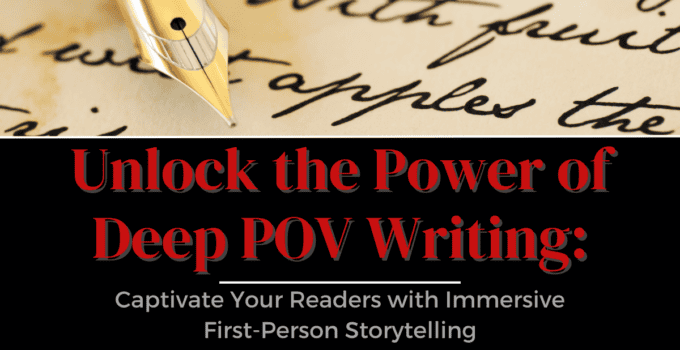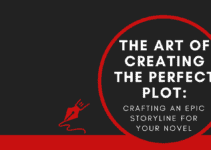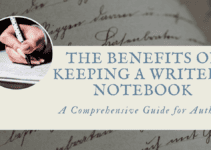What is Deep POV Writing and Why Should Writers Care?

Deep Point of View (Deep POV) is a writing technique that allows readers to fully immerse themselves in a character’s thoughts, feelings, and sensations. By eliminating narrative distance, Deep POV creates an intimate, visceral reading experience that draws the audience deeper into the story.
Writers should strive to master Deep POV because it is a powerful tool for crafting truly compelling, emotionally resonant narratives. When executed effectively, Deep POV enables readers to see the world through the character’s eyes, fostering a profound sense of connection and investment. This heightened level of reader engagement can elevate a good story into an unforgettable one.
Implementing Deep POV requires a nuanced understanding of perspective and a willingness to make bold choices as a writer. But the payoff is well worth the effort – stories told through Deep POV have an undeniable intensity and immediacy that keeps audiences captivated from the first page to the last.
The Key Elements of Writing in Deep POV
When writing in deep point of view (POV), the key is to immerse the reader fully in the character’s perspective. This means going beyond simply describing external actions and events, and instead delving into the character’s innermost thoughts, emotions, and sensations.
One of the most crucial elements of deep POV writing is conveying the character’s thoughts and feelings in an authentic, unfiltered way. Utilize internal dialogue to give readers direct access to the character’s stream of consciousness. Avoid distancing “filter words” like “she thought” or “he felt,” and instead plunge the reader straight into the character’s subjective experience.
Equally important are rich sensory details that bring the character’s world to life. What does the character see, hear, smell, taste, and feel? Weave these sensory impressions seamlessly into the narrative to create a vivid, immersive experience.
Ultimately, deep POV writing requires a relentless commitment to a limited perspective. The reader should only have access to what the character knows and perceives in the moment. By mastering these techniques, writers can forge an unbreakable bond between reader and character, crafting a truly captivating and emotionally resonant narrative.
Mastering the Art of Deep POV Writing: Practical Strategies and Examples

As writers, we’re constantly striving to create immersive, engaging narratives that captivate our readers. One of the most powerful tools at our disposal is the art of deep point of view (POV). By diving deep into the thoughts, feelings, and sensations of our characters, we can transport readers into the heart of the story, fostering a profound sense of connection and understanding.
Crafting effective deep POV requires nuance and skill, but the payoff is well worth the effort. Through intimate narration techniques, we can eliminate the distance between the reader and the character, making them feel as if they are experiencing the story firsthand. This not only heightens the emotional impact but also lends an unparalleled authenticity to the narrative.
Explore practical strategies and concrete examples to help you master the art of deep POV writing. From navigating the subtle differences between deep POV and third-person narration to employing sensory details that bring your characters to life, you’ll walk away with a toolbox of techniques to elevate your writing to new heights.
Tip – Going from a narrative into Deep POV feels like ‘zooming in.’ Use it for dramatic effect.
Example – Put yourself in the shoes of your character and write your thoughts.
Charlie turned to walk down a darkened alley–the shortest distance between two points–suddenly wishing he was back in math class instead.
Slow, thoughtful steps. One at a time. Deliberate movement.
Skin prickled, hair rose and beads of sweat began gathering, he swiped at the moisture before it rolled into his eyes.
Ping! Crash! The one lonely light bulb over his left shoulder shattered, pelting him with bits of glass.
Gunshot! Run! Now!
The sound of his feet stomping through puddles on broken concrete reverberated through his ears, but the beat of his heart was louder.
Almost there. Light from the corner of the last building kept vigil. Stomp. Stomp. Splash. Stomp.
Whoosh! Air left his body. Hit on his right and slammed to the ground, he gasped to suck in air as he attempted to get back to his feet. The smell of urine and God only knows what else threatened to make him puke on whoever was attacking him.
He could barely see who it was through the darkness and his already swelling eye.
Throwing his arms in front of his head to block …whatever. Every impact burned until the only thing he could do was lunge for whoever was there.
Jumping, arms wide, making impact, they tumbled to the ground in a tangle of fast-moving arms and legs.
Immerse yourself in the world of deep POV writing and unlock the power to captivate your readers like never before.
Avoiding Common Pitfalls: Maintaining Consistency and Clarity in Deep POV Writing
Maintaining a consistent and clear deep point of view (POV) is crucial for immersing readers in your story. Avoid the common pitfalls of head hopping and jarring POV shifts that can disrupt the reading experience.
It’s essential to stay grounded in your character’s perspective, allowing readers to fully inhabit their thoughts, feelings, and sensations. Inconsistent POV can leave your audience feeling disoriented and disconnected from the narrative.
Equally important is preserving your character’s unique voice. Ensure that their internal monologue, reactions, and observations align seamlessly with their personality, background, and emotional state. Striking the right balance between internal and external action is key to creating a vivid, immersive, deep POV.
By steering clear of these common pitfalls, you can craft a captivating, cohesive narrative that keeps readers fully invested in your character’s journey.
The Benefits of Deep POV Writing: Captivating Readers and Elevating Your Storytelling
As writers, our ultimate goal is to transport readers into the worlds we create and forge an unbreakable emotional connection with our characters. One of the most powerful tools in our arsenal is the use of deep point of view (POV). By immersing readers in the thoughts, feelings, and sensations of a single character, deep POV elevates the storytelling experience, captivating audiences and drawing them deeper into the narrative.
When executed effectively, deep POV allows readers to step into the shoes of your protagonist, seeing the story unfold through their eyes and experiencing events as they do. This heightened sense of immediacy and intimacy fosters a level of reader engagement that surface-level POV simply cannot match. Readers become invested in the character’s journey, empathizing with their triumphs and struggles on a visceral level.
Beyond heightening the reading experience, deep POV also serves to enhance character development. By giving readers access to a character’s innermost thoughts and motivations, you can craft a more nuanced, fully-realized individual who feels authentic and true-to-life. This, in turn, strengthens the overall narrative, as readers are more likely to become invested in a character they can truly understand and relate to.
Ultimately, the benefits of deep POV are undeniable. By immersing readers in the rich inner world of your characters, you can create an unforgettable storytelling experience that will leave a lasting impression long after the final page is turned. So, if you’re looking to captivate your audience and elevate your writing, think in terms of Deep POV and the intensity it can offer.
Conclusion: Start Writing in Deep POV Today and Transform Your Narrative Voice
LET’S CONNECT!
There are many ways to connect withAmy Stewart Bell. We would love to know what you think and any of the topics we offer. We welcome your comments and want to interact with you!
If you haven’t yet, grab your copy ofOnce Captured, the first in Amy’s Captive Series. And be on the watch for the second in the series, Uncharted Captivity, to drop!
You can also connect in other areas. Join us on Instagram@AmyWritesAlland on Facebook@AmyWritesAll.
Be sure to join our community newsletter, and you will get even more inside info!








